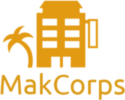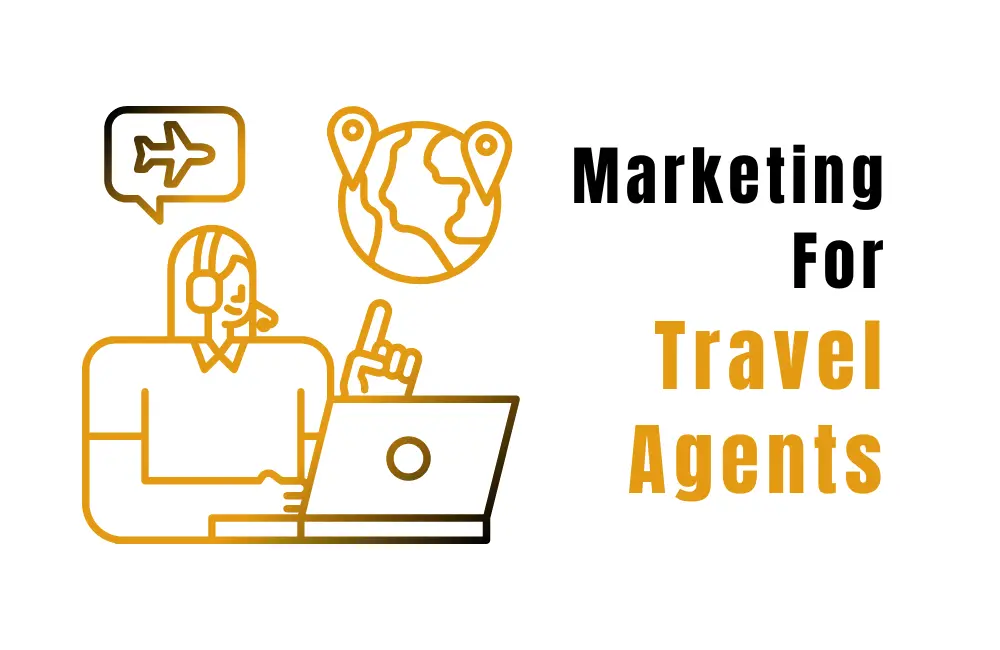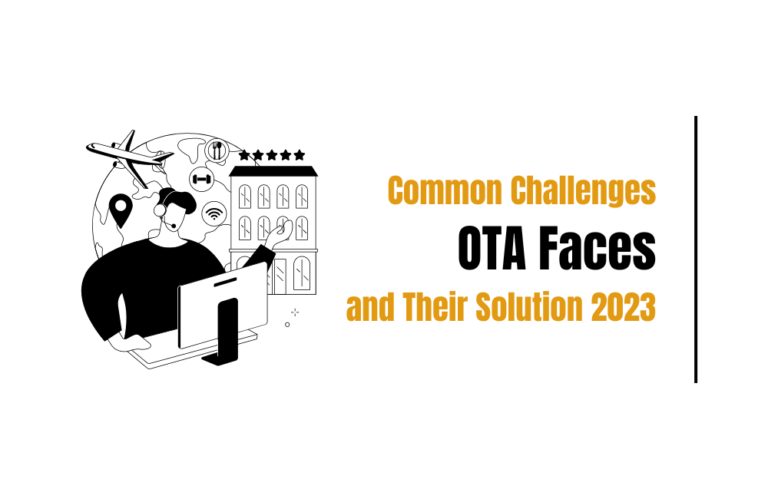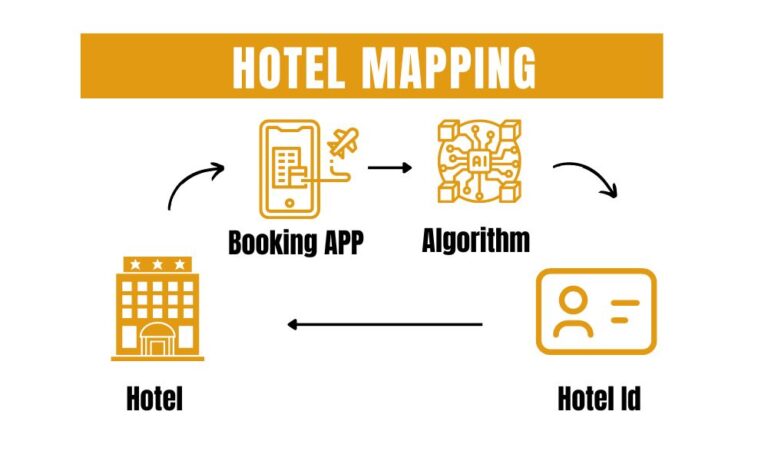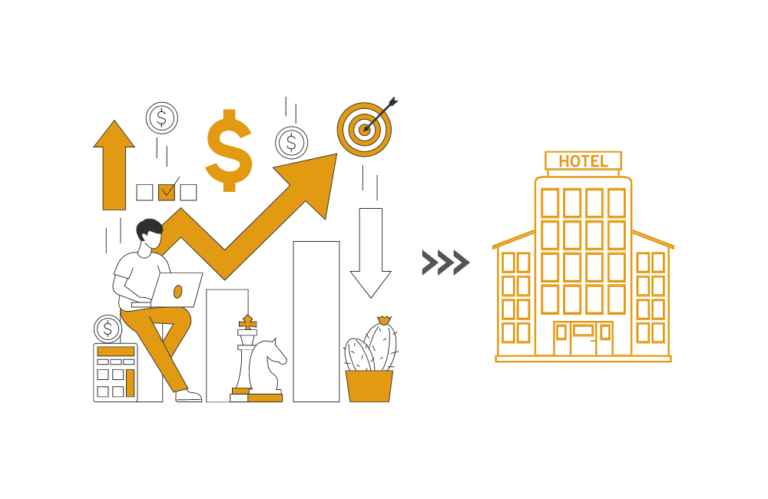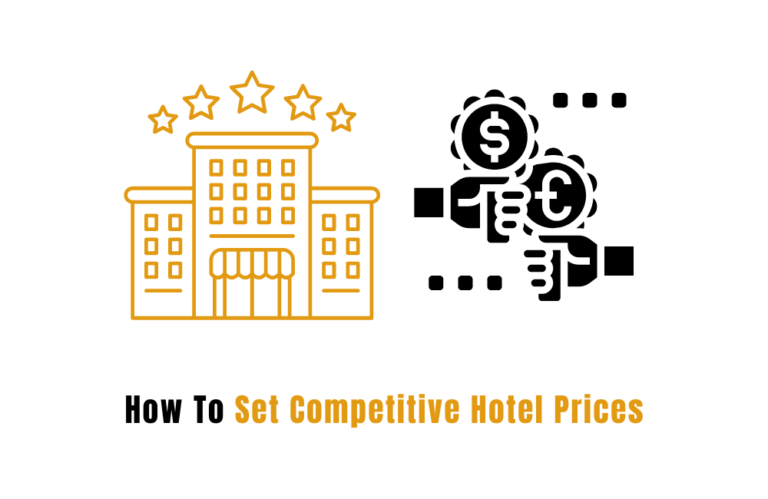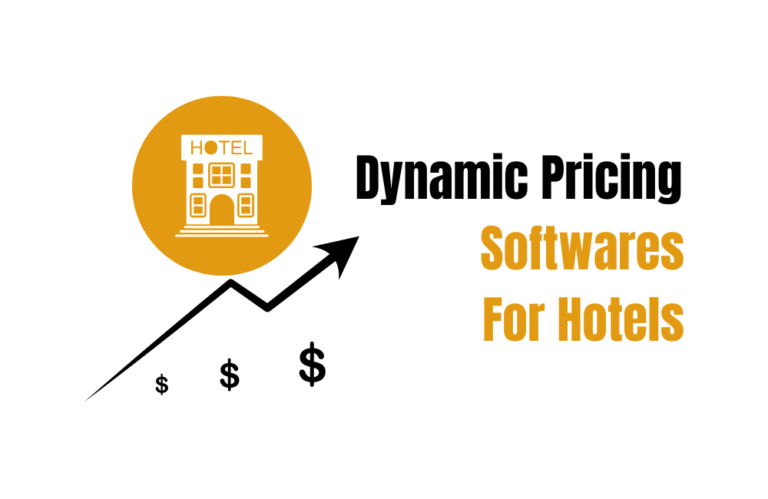The Ultimate Guide to Marketing for Travel Agencies in 2025
The travel industry is booming—but so is the competition. In 2023, according to research published on research and markets the global online travel market was valued at $512.5 billion USD and it’s projected to soar to $1.26 trillion by 2032 with a 12.99% annual growth rate.
What does this mean for your travel agency? It means huge opportunities are there but only if you know how to stand out in an increasingly crowded, digital marketplace.
Travelers today aren’t just walking into agencies or making phone calls. Infact, Hilton travel trend report revealed, 80% of them now expect to book their entire trips online, and the demand is even higher among younger generations, with 86% of Millennials and 83% of Gen Zers leading the shift.
If your agency is not optimized for this digital-first world, you’re missing out on a massive portion of potential clients.
Althogh, the market is competitive but with the right marketing strategies, your travel agency can tap into this growth, attract new customers, and build lasting relationships in a space where travelers crave convenience, personalization, and trust.
In this guide, we’ll walk through proven marketing tactics to help your agency not just survive, but thrive in today’s fast-paced, online-driven travel industry.
Is this what you want?
Read further to discover the marketing strategies that your travel agency need to adopt to hop on the success ladder in 2025 and beyond.
1. Understand Your Market and Target Audience
When it comes to marketing, especially in the travel industry. knowledge is power. As travel agencies compete for attention in a competitive marketplace. By understanding the nuances of your specific market segment can help you stand out.

Answer the questions below to decode this vast market:
Question 1: What’s Your Agency’s Niche?
What specific category or segment does your agency belong to?
Are you primarily destination-specific, offering unique experiences in certain areas, or do you focus on delivering the best value deals?
Question 2: Who Exactly Are Your Ideal Travelers?
Considering factors such as age, gender, ethnicity, income level, and education, who would benefit most from your offerings?
Are they families looking for package tours, solo travelers seeking adventures, or professionals searching for luxury retreats?
Question 3: Where Are Your Travelers Heading?
Which destinations or types of experiences are currently in demand within your identified demographic?
Are there specific regions or activities they show a clear preference for?
Question 4: How Do They Plan and Book Their Trips?
What platforms or channels are your target travelers using to discover new destinations and make their bookings?
Do they lean more towards online travel aggregators, direct bookings, or seek recommendations through social platforms?
Question 5: What’s Their Spending Behavior?
Are they predominantly price-sensitive, looking for the most affordable deals, or are they willing to splurge on unique experiences?
How does the financial factor influence their travel decisions?
Considering that a significant number of travelers cite finances as a barrier, where does your offering fit in?
Question 6: How Can You Personalize Their Experience?
Based on the answers to the previous questions, how can you tailor your packages or offerings?
What can you introduce or modify to make your services more aligned with their preferences and needs?
By seeking answers to these questions, travel agencies can gain a clearer perspective on their position in the market. Plus also understand how to appeal to their target audience to ensure a more effective and resonant marketing approach.
2. Do a Competition Analysis
Striving to get ahead of the competition in the travel industry is like joining a race where everyone wants to get ahead. So, how do you ensure you’re not just running, but sprinting with the right strategy? The answer is by taking a good look at what the other racers are doing. This is what we call a “Competition Analysis.”
Let’s understand how to do competitive analysis to get ahead of your competitors.
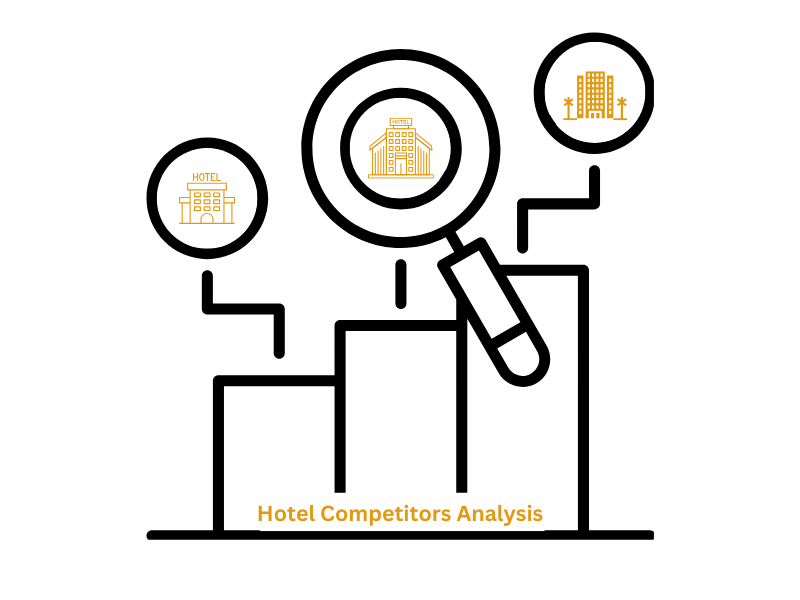
1. Identify Your Main Competitors
Who’s hot in the game right now? Think about the big names, but don’t forget the smaller ones that might be doing something special. List them out.
2. Check Their Online Presence
Hop onto the web. How are they presenting themselves? Look at their websites, social media pages, and any online ads they might be running. Are they more on Instagram, or are they blogging their way to success? Take notes!
3. Analyze Their Offerings
What trips or packages are they selling like hotcakes? Maybe they’ve got a special Bali retreat or a unique trekking experience in the Himalayas. What prices are they charging, and what’s included?
4. Read Customer Reviews
Places like TripAdvisor or even Google Reviews can be a goldmine. What are travelers raving about? More importantly, where are these competitors slipping up? These insights can help you avoid making the same mistakes.
To get data of customer reviews from other travel agencies or travel metasearch platforms you can use reviews API, and for getting an insight of what customers are talking about your competition on social media or the web, you can use brand monitoring tools.
5. Analyze Competitor’s Pricing
In the travel industry, even a 5% price difference can sway customer decisions. (Source)
In a study, 96% of respondents travelers said that they compare hotel prices using various comparison websites. (source).
For analyzing other travel agency’s pricing, you can use Makcorps Hotel Price API. It helps you keep up with market rates and allows you to offer attractive deals that lead to more conversions.

5. Spot Competitor’s Marketing Techniques:
In order to be competitive, as a travel agency you need to adopt new marketing tactics.
However, you should also brainstorm effective ways to attract customers.
But, nothing can give you a significant edge than analyzing what your competitors are doing and executing that in a better way.
So, analyze- Are they using beautiful videos to lure in travelers? Maybe they’re offering early-bird discounts or loyalty programs.
Plus, also understand the tools and tactics they’re using to pull customers in.
6. Learn From Their Strengths (and Weaknesses!):
Here’s where you play smart.
Adapt the good stuff they’re doing, and try to better it.
Saw a gap they missed? That’s your golden ticket. Dive right into that space and make it your own.
Remember, in this race, it’s not just about speed but also about direction. Competition analysis is a compass to guide you toward where you should be heading.
To learn more about how to do hotel competitive analysis, head over to the blog.
3. Partnership With Service Providers
Give partnerships a whirl. It might just be the golden ticket your agency needs to thrive in this bustling market!
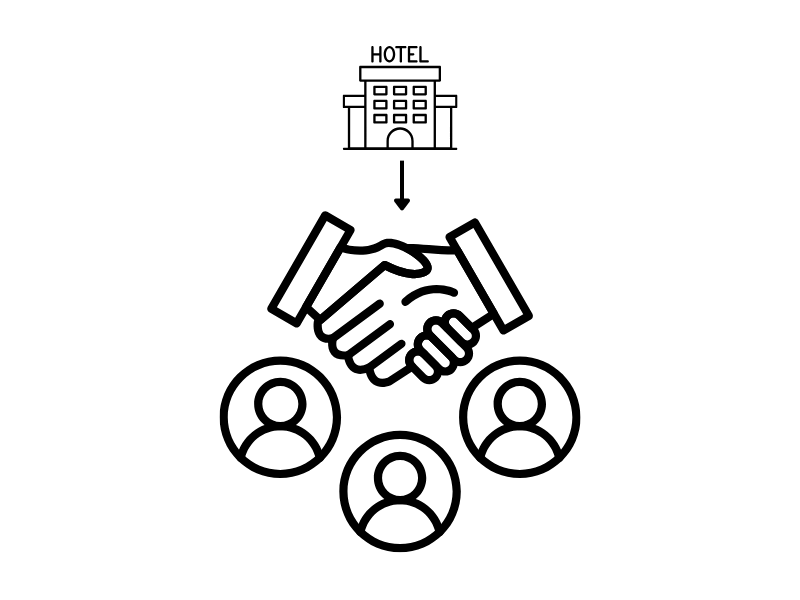
Here is how you can do it-
One-Stop Shop: By joining forces with hotels, airlines, and car rentals you can offer travelers everything in one place. It’s like being the ultimate travel package artist!
Competitive Edge: You know, by teaming up with various providers, you really open up a world of possibilities for your services. Think about it – from family getaways to solo travelers, you’d have the flexibility to offer all sorts of packages, deals, and even cool coupons. Imagine tossing in a free dining coupon for families or perhaps a relaxing spa session for couples. Sounds enticing, right? That’s a surefire way to grab the attention of more travelers and get a competitive edge in the fiercely competitive market.
Building Bonds: By connecting with other industry folks, it’s like opening new doors left and right. It’s kind of like when two cafes team up for a special promo — suddenly, they’re the buzz of the town. Similarly, building those bonds in the travel world? It can lead to some seriously cool opportunities down the road.
4. Craft An Effective Pricing Strategy
Creating a fruitful pricing strategy is not just about slapping a price tag on your packages but it’s about finding that sweet spot where your offers are enticing to travelers and profitable for your business.
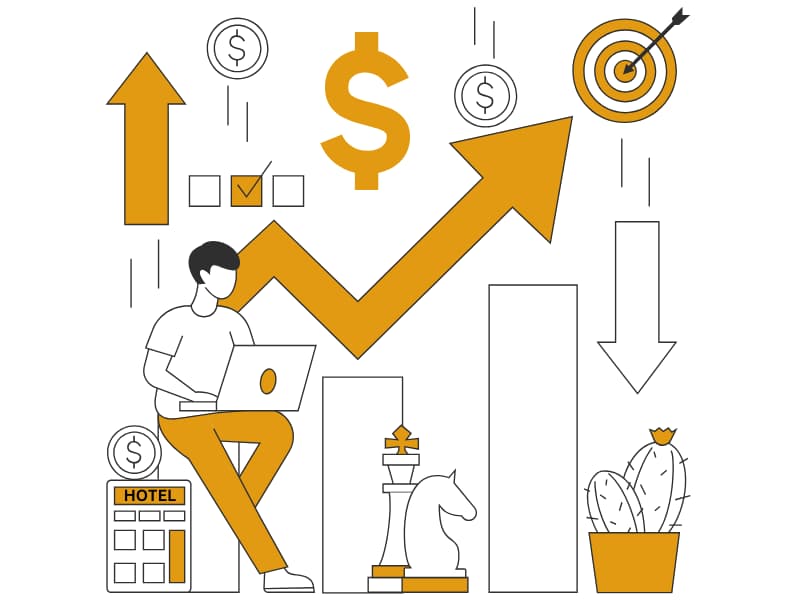
Follow these steps to determine the best prices-
Understand Your Costs: First and foremost, know your numbers. Factor in everything – from hotel bookings, transportation, guide charges, and even the tiny overheads. You can’t price effectively if you don’t know how much you’re spending.
Analyze the Competition pricing: Again! As mentioned above in the article, analyze what they are charging. How does their offering differ from yours? This isn’t about copying, but understanding where you stand in the market. To know competitor pricing you can use this Hotel Pricing API.
Perceived Value: Think about what makes your agency special. Maybe it’s those unique local experiences or the extra safety measures you take. These unique factors can add perceived value, and people often don’t mind paying a tad more for something they perceive as superior.
Dynamic Pricing: The travel world is ever-changing. Seasons, demand, and even current events can greatly influence the desirability of certain destinations. Adjust your prices based on these factors. Read this blog further to know more about dynamic pricing strategy in hotels and how to implement it.
Offer Bundles or Packages: People love feeling like they’re getting a deal. Create packages that combine various services (like transportation, accommodation, and excursions) at a reduced total cost. They’re not only convenient for travelers but can also boost your sales.
Regular Review: The travel landscape shifts regularly. Make it a habit to revisit your pricing strategy every few months and make changes accordingly.
Remember, the aim is not to be the cheapest but to provide the best value. Price communicates value, so ensure that your pricing reflects the wonderful experiences travelers will get when they book with you.
5. Adapt The Right Promotional Strategy

When it comes to creating a promotional strategy for your travel agencies, it’s essential to remember that every travel agency has its unique vibe and audience.
Tailoring your promotional strategy to reflect that uniqueness isn’t just smart; it’s the key to resonating with your ideal customers.
Here are a few promotional strategies for travel agencies you can use-
1. Metasearch Engine Integration
Partnering with large metasearch engines like TripAdvisor and Skyscanner can boost a travel agency’s visibility. These platforms aggregate deals that allow travelers to compare prices and offers. For those looking for a solution for small businesses, such partnerships are crucial. Agencies are usually featured based on a pay-per-click model. It’s crucial to continuously monitor competitor’s rates and use analytical tools, such as Skyscanner’s Performance Analytics for Partners, to gauge performance and adjust markups accordingly. Depending on the resources available, this adjustment can range from manual to fully automated.
2. Search Engine Visibility
Roughly 30% of travelers use search engines to find travel deals. Travel agencies can capitalize on this by writing quality blog posts that both educate and engage potential customers. Dedicated landing pages can also be created for specific deals or offers, ensuring that they’re optimized with specific keywords to rank higher on search engines. Effective search engine optimization (SEO) encompasses both strategic on page and using link building strategies that focus on meeting technical standards and providing valuable content.
3. Email Marketing
A tried-and-tested method, email marketing is about more than just sending offers. It’s about fostering relationships with potential customers. To effectively leverage this channel, agencies need to collect email addresses, pick a suitable mailing tool like MailChimp that track user behavior to provide tailored offers and a AI writing tool that writes professional emails in no time, This strategy can include offering unique deals, bundles, holiday specials, and even birthday discounts.
4. Web Advertisements
Online ads, while straightforward, require a strategic approach in the travel industry. Using targeted Google search ads can yield positive results, especially if focused on niche segments. Retargeting is another powerful strategy, where potential customers who’ve visited the site but didn’t make a booking are reminded of their previous searches. The key is to use data-driven personalization to ensure ads are shown to users most likely to convert. Social media platforms like Facebook also offer specialized tools for targeted advertising campaigns.
5. Vlogging and Social Media Marketing
Travel bloggers and influencers have a growing audience, and agencies can tap into this trend. A consistent, well-documented social media marketing strategy can make a difference. Instead of merely promoting services, agencies should showcase the experience of traveling, highlighting destinations, and local attractions, and offering travel hacks.
Quality imagery and photos are vital, especially on platforms like Instagram. Given the interactive nature of social media which can be effortlessly done with AI poster generator, agencies should be prepared to engage with customers actively, address feedback, and resolve issues promptly.
6. Partnerships and Collaborations
Co-Marketing Initiatives: By collaborating with non-competitive businesses that cater to a similar demographic (e.g travel gear brands, local eateries, or transport services), travel agencies can pool resources and run joint promotions.
Influencer Partnerships: Engaging with travel influencers or bloggers to showcase your services or packages can be highly effective. Their authentic reviews and experiences can influence their follower’s decisions.
7. Loyalty Programs and Referral Schemes
You know when you can’t resist coming back to your favorite coffee shop because they offer that ‘buy-10-get-1-free’ card? That’s exactly the charm of a loyalty program for travel. When you offer something like a points-based system, customers feel like they’re working towards a reward.
“Stay with us for five trips, and get a massive discount on your sixth!” sounds tempting, doesn’t it? And then there’s the magic of referral schemes. Imagine giving your happy customers a little incentive, maybe a discount or a special perk, for bringing in their friends. It’s like saying, “Loved our service? Tell your friends and get rewarded!” It’s a win-win.
8. Attend Travel Trade Shows and Events
Picture this: a massive hall filled with travel enthusiasts, agencies, and experts under one roof. By being a part of travel trade shows or local tourism events, you’re not just putting up a stand. You’re diving deep into the hub of the industry.
This is your chance to shine, make some strong connections, and even learn a thing or two from other experts. You’re essentially putting your brand on the map, both for potential clients and industry peers.
9. Paid Advertising
Ever noticed how sometimes, after checking out a pair of shoes online, those shoes seem to follow you everywhere on the web?
That’s retargeting, a smart trick in the world of paid advertising. From Facebook ads showcasing your latest holiday packages to PPC campaigns designed to draw in quick clicks, paid advertising can be a game changer. It’s like having a giant billboard but on the web.
12. User-Generated Content
There’s something incredibly authentic about seeing real travelers share their own tales and photos. It’s not a glossy ad; it’s raw and real.
When you encourage your clients to share their journey experiences and showcase them on your platforms, you’re sending a powerful message: “See how much fun our travelers are having!” And in today’s age, where authenticity is king, this can be gold.
Conclusion:
Nowadays, effective marketing for travel agencies is paramount. With countless options available to travelers, agencies must differentiate themselves through innovative marketing strategies.
The tactics laid out in our guide are not merely recommendations but necessities for those who want to stand out. Overlooking the significance of marketing for travel agency endeavors means potentially missing out on vast opportunities.
To truly excel, agencies must not only meet industry standards but set them to put their brand at the forefront of travelers’ minds. As travel fervor reignites worldwide, it’s essential your agency is their first port of call.
